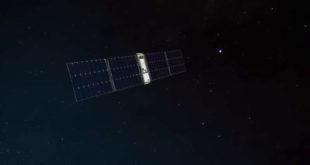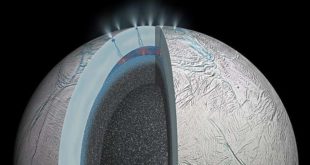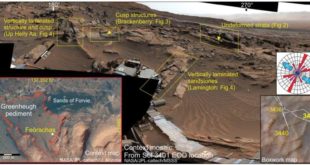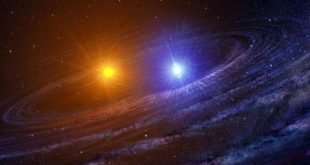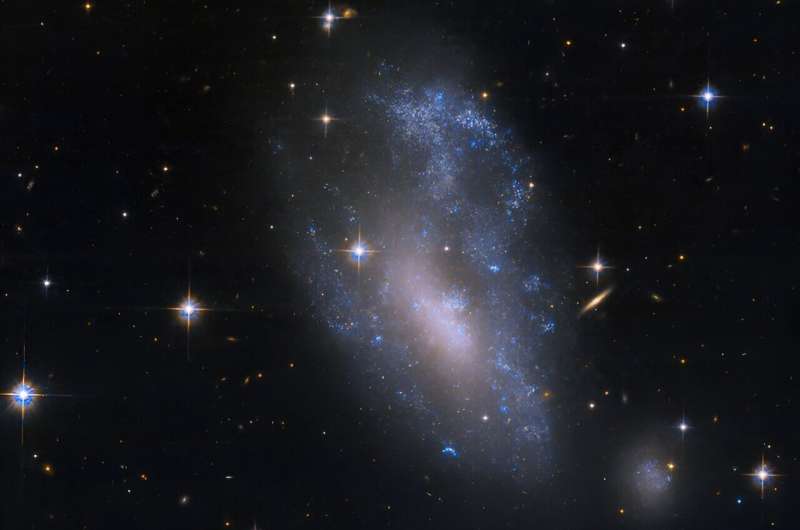
UGC 3912 is classified as a spiral galaxy, but you wouldn’t know it from this detailed NASA Hubble Space Telescope image. UGC 3912’s distorted shape is typically indicative of a gravitational encounter with another galaxy. When galaxies interact—either brush up against each other’s gravitational fields or even collide—their stars, dust, and gas can be pulled into new paths. UGC 3912 might have once been an organized-looking spiral, but it looks like it’s been smudged out of shape by a giant thumb.
Fortunately, when galaxies interact, the individual stars and objects that orbit them remain whole even though their orbits can change so dramatically that the entire galaxy’s shape is altered. That’s because the distances between stars in galaxies are so vast that they don’t crash into one another, just continue serenely along their new orbits.
Astronomers are studying UGC 3912 as part of an investigation into supernovae activity—when stars at least eight times larger than our sun explode at the end of their lives. Hubble is examining one of the several types of supernovae, a hydrogen-rich phenomenon known as Type II. Though ample Type II supernovae have been observed, they exhibit enormous diversity in their brightness and spectroscopy and are not well understood.
Citation:
Hubble captures a suspected galaxy encounter (2024, February 1)
retrieved 1 February 2024
from
This document is subject to copyright. Apart from any fair dealing for the purpose of private study or research, no
part may be reproduced without the written permission. The content is provided for information purposes only.
 Innovation Discoveries Latest Scientific Discoveries in Innovation
Innovation Discoveries Latest Scientific Discoveries in Innovation
